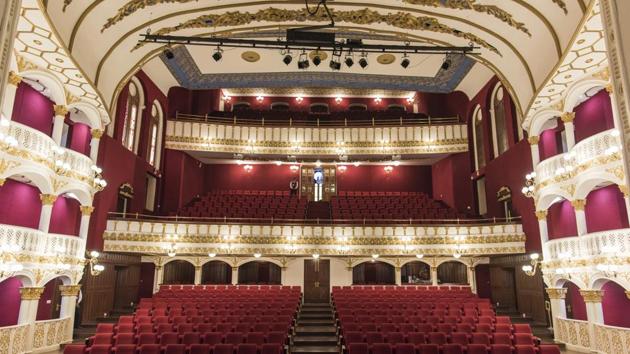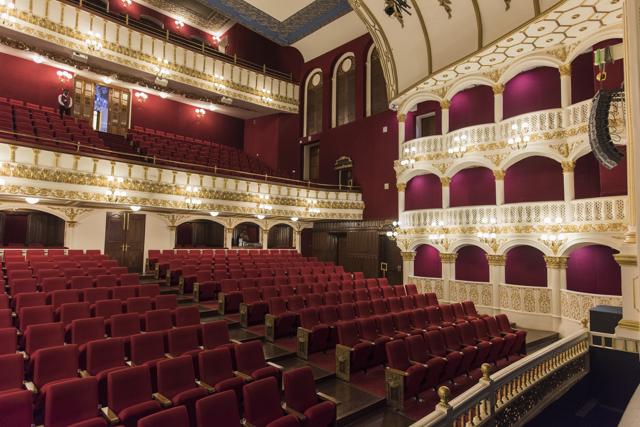Insider’s guide to... The Royal Opera House
The heritage site shut its doors to the public nearly a decade ago. It has now been restored to its former, royal glory.
Visiting The Royal Opera House is like walking through a vortex and unexpectedly finding yourself in some remote corner of the Buckingham Palace, London. Crystal chandeliers hang from the ceiling. Brass lamps are mounted on lime green columns. Oil paintings adorn the wooden panels along the walls. The spiral staircase that leads up to the balconies is covered in a red-coloured velvet carpet.

“Over a century old [The Opera House opened in 1912], the entertainment venue was built strictly to stage operas, and catered exclusively to the city’s elite — British officials, and the Parsi community in Mumbai. The who’s who of Bombay would frequent it, and so, it was designed in a way that would exude grandeur and class,” says Kruti Garg, an architect who worked on the restoration of the Opera House.
Currently under the patronage of the Maharaja of Gondal, Gujarat, the newly restored Opera House opened its doors to the public in October 2016, the first time since the venue shut down in 2008. Garg and the manager of The Royal Opera House from the Maharaja’s team, RL Divakar, give us a tour of the performance venue.

Statues on the facade: The main facade of The Royal Opera House faces Sandhurst Road, one of the widest roads in Bombay in the 1800s. The width of the road made it easy for horse-drawn carriages to access the performance venue. Additionally, to emphasise on the exclusive purpose of the venue, the facade features statues playing a series of instruments — a violin, a harp, and Cupid playing the trumpet.

Interior design: The roof arches and the columns in the main lobby feature traditional baroque design — intricately linked spirals — painted in gold against a white background. Garg says the current design is identical to the original one, as documented in a book, titled Territorials in India, edited by JJ Shepherd, a collection of essays that demystify British architecture in India.

Art on the roof: Above the main entrance to the auditorium, are oil portraits, painted by an undocumented artist. Keeping with the theatrical theme of the venue, the portraits feature legendary playwrights and poets, including William Shakespeare and William Wordsworth.

The royal seat: The lobby to the first floor balcony features original Minton tiles that have stood the test of time. The restoration team has made a few furniture additions to the décor. Featured here is a conversation chair from the personal collection of the Maharaja of Gondal.

Sound proofing: The main auditorium of The Royal Opera House is its defining feature. The halls can seat 580 audience members, across the ground floor and two balconies (on the second and third floor). A stand-out feature is the roof that is curved like the horn of a gramophone, to ensure maximum sound in each corner. The hall features facades to two side balconies. Think Richard Gere and Julia Roberts’ seat during the opera sequence in Pretty Woman (1990). While originally the hall allowed seating in the side-balconies, current-day fire safety norms don’t allow for the feature.





